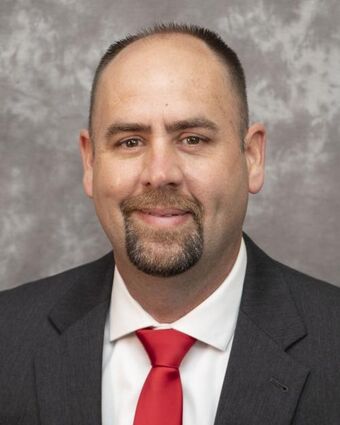'Excited ... hopeful' describes 21-22 school start
Last updated 8/10/2021 at 9:36pm
School bells rang Wednesday morning, signaling the start of the 2021-22 school year for about 10,000 students on the south and east ends of Orange County.
The first day of school for Bridge City, Orangefield and West Orange-Cove school districts is Aug. 11 and Little Cypress-Mauriceville schools open up Aug. 16.
How many show up was the big question going in.
“The biggest challenge right now is we don’t know what to expect as far as students,” Mike Kelly, Bridge City superintendent, said Tuesday afternoon.
“With COVID the way it was from spring of 2020 through the spring of 2021, we had remote learning last year, so we had a lot of students who stayed home and went remote.
“Enrollment had been on an increase for the last few years. A demographic study we had done showed a definite increase. We feel like our enrollment is going to have a nice increase.
“But with COVID, things went backward. And now the TEA [Texas Education Agency] has stopped funding remote learning, and with the delta variant ramping up, we don’t know exactly how many students are going to be here.”
Orange County had recorded 70 new cases of COVID-19 this past week, according to the state, and had 36 of its residents hospitalized with COVID-19, Joel Ardoin, county Emergency Management Coordinator, said.
Ardoin said the county had 327 confirmed and probable active COVID-19 cases.
According to the state, the Trauma Service Area nine-county region including Orange County recorded 24.1% of all available hospital beds were filled with patients positive for COVID-19 on Monday, Aug. 9. The seven-day average for TSA R was 20.4% for Aug. 3-9, with all seven days above a 15% hospitalization rate.
Famously, Texas Gov. Greg Abbott was crushed by critics on the right wing of the Republican party when he ordered the close of businesses as a public health matter in response to the COVID outbreak in the spring of 2020. After fully reopening the state, he vowed last Thanksgiving to bring back capacity rollbacks if COVID patients made up 15% or more of those hospitalized for seven straight days.
Then, with COVID hospitalizations going back up statewide in July, he not only changed his stance but barred local governments, like counties and school districts, from limiting occupancy or requiring masks or vaccinations.
While the state – in the form of the governor – has made it illegal for schools to require its students or employees to wear masks, the state – through the TEA – has said it will no longer pay for remote schooling, so in-person learning is the rule for Texas schools as this school year begins.
Students that test positive for COVID-19 will receive remote learning, however, while they quarantine.
But no longer will students have to quarantine solely because of being in contact with contagious students.
Kelly, the BC superintendent, notes a big difference this school year is that schools are not required to do contact tracing when one student tested positive.
“Last year, if a volleyball player has a [COVID] positive test and we find there were five other girls in contact with them, they all had to quarantine,” he said. “We had to reschedule games if we didn’t have enough students to play.
“Now, if a volleyball player comes up positive, that person stays home for 10 days, but any of the close contacts, they just need to watch themselves for symptoms.
“Otherwise, it’s like pre-COVID. If you don’t have enough students to play a game, you have to forfeit.”
Kelly said any contact tracing is up to local health departments as it stands now.
“What the TEA found, from state-wide data, was that there were very few students contracting COVID at school,” he said.
“When we’d send students home to quarantine [because of close contact with a student who had tested positive for COVID-19], the chances were slim to none that those students would end up with COVID.”
At Valley Mills, the school district near Waco where Kelly was superintendent before being hired by Bridge City last March, he said, “out of about 400 students quarantined over course of a year because of close contact, we had one student out of 400 that came down with COVID.
“At BC, I think we had three students out of everybody that we quarantined test positive. That was the kind of data that was presented over the state.
“The bottom line was there were very few students contracting COVID at school.”
One reason for that probably has to do with the exacting standards for cleanliness schools like Bridge City undertook to fight COVID.
“COVID hasn’t been pleasant, but not everything has been bad,” Kelly said.
“There are some things that came out of this that will stick. I think they will help with common cold, the flu, things that continue to happen.
“But I hope that the precautions coming out of this will continue to lessen those things as well.”
For BC that includes hand sanitizers at all entrances. Custodial staff cleans entrances, including door handles, every hour, desks are wiped off at least twice a day, as is playground equipment. Employees use misters to spray the buildings, rugs are cleaned once a day.
“All of the things we were doing last year, all of the precautions we were taking to mitigate the [COVID] spread, we will continue to do those,” Kelly said.
“And all of those things that we did to encourage social distancing, even riding with windows down on our buses, we’re keeping those in place, but requiring a mask is not one of them.”
As is the case every summer, Kelly says school administration keeps “extremely busy.”
“There’s just a lot of district planning. We’ve had some facilities studies, some demographics studies, just trying to see what’s next.
“You always kind of have to be two or three years ahead. If not, you’re behind.”
Because of COVID-19, the new 2019 coronavirus that hit the United States at the start of 2020, plans have been made, then remade constantly the last year and a half.
Here’s hoping things are different.
“When COVID first started, superintendents had a TEA COVID call with the Commissioner of Education every day, five days a week at 3 o’clock,” Kelly said. “The TEA came out with a ton of guidance, the UIL came out with a ton of guidance.
“It’s not that way this time around, they’re providing a lot less guidance. What I am seeing is a lot of excitement about the return to school.
“And, hopefully, a return to normalcy.”










Reader Comments(0)